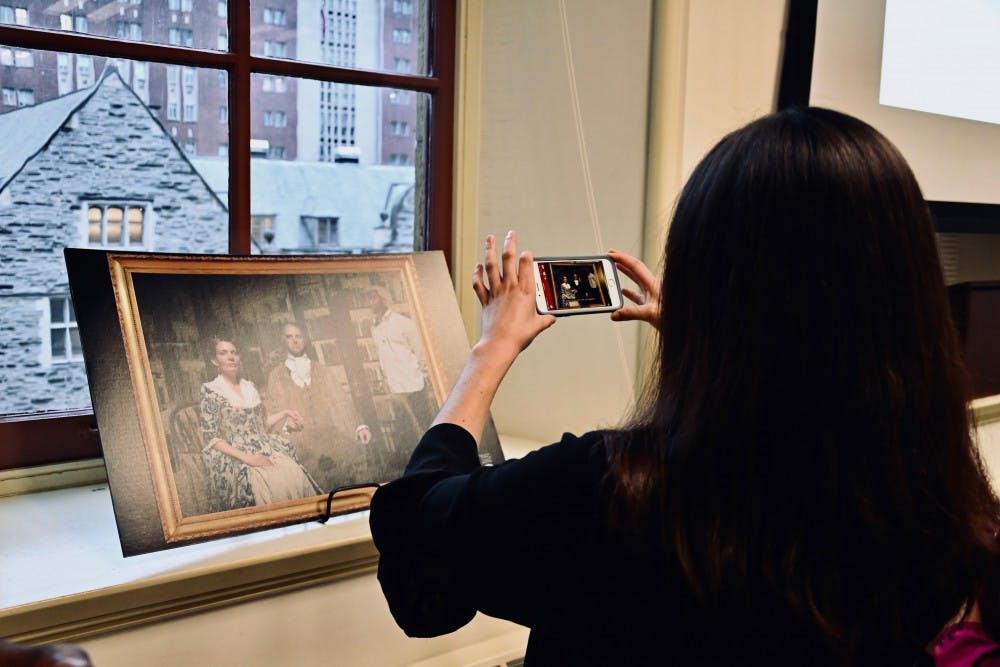
History professor Kathleen Brown discussed her research on the history of slavery at Penn and the United States at a Philomathean Society event on Oct. 3.
During the talk, Brown discussed the work done by the Penn & Slavery Project to reveal Penn’s historical connections to slavery, arguing that the most significant ties were through the School of Medicine. She also highlighted some of her research on the connection between gender and slavery in North America. The event was part of the Philomathean Society's Professor Tea program, which gives Penn faculty informal opportunities to share their ideas with the public.
The Penn & Slavery Project is a student research group that started investigating the University’s ties to slavery in 2017. The students discovered that over 75 former Penn trustees owned slaves, a professor was compensated by the University for work done by his enslaved person on campus, and Penn led fundraising expeditions that solicited donations from prominent slave owners and traders. Their research led the University to form a working group to address Penn's ties to slavery, reversing the University's 2016 denial that Penn was directly involved in slavery.
After reviewing this research, Brown turned to focus on the Medical School's connections to slavery.
"What people who are in the undergraduate program in the Arts and Sciences don’t realize is that the College was a pretty tiny and insignificant part of Penn until the 20th century,” Brown said. “The vast bulk of the students and the wealth of the university was the medical school until about the mid-19th century."
During their investigations, Brown said, Penn & Slavery Project members found that a significant portion of early medical students were southerners who benefited from slavery and, once they earned their degrees, went on to practice “plantation medicine,” or the work of keeping slaves just healthy enough to be productive laborers. Many early Medical School professors were also proponents of “race science,” the theory that there is a biological difference between races that justified slavery.

Brown cited the example of Samuel Morton, an 1820 Medical School graduate who used the skulls of enslaved people to argue that there were inherent differences between the brains of black and white people. The Penn Museum still holds Morton's cranium collection today.
Racial biases in medicine persist today, she said. People are often told they are at risk for certain complications because of their race "regardless of their individual habits," she added.
"They’re being told that because of race that they have better or worse chances of carrying pregnancy to term, that they’re more likely to have c-sections," Brown said. "There are all kinds of things that have come out of [race science] that still haunt people to the present day."
In the future, the Penn & Slavery Project plans to release an augmented reality tour that will allow people to explore Penn's ties to slavery in different areas of campus. People will be able to scan codes outside particular buildings with their phones and see short videos about the University's connections to slavery. Possible stops include the Medical School and the Quad, which contains a statue of slavery advocate George Whitefield and halls named after slave holders. Brown said she hopes the tour will be ready for public release in the coming spring.
Engineering sophomore Ariana Kyimpopkin, an archivist for the Philomathean Society, said she was particularly interested to learn about the tour.
"There’s a lot of talk about digital humanities and how you can bring technology into the humanities and specifically history," Kyimpopkin said. "That seems, to me, like a perfect example of something you can do to combine your history knowledge and someone’s technical expertise.”
College sophomore Mariah Van Sciver, an attendee who is currently enrolled in one of Brown’s classes, said she enjoyed learning about tangible work that Penn & Slavery Project student researchers are doing.
“It’s nice to hear from people who are doing the work and to see a functional way that students can enact change,” she said.
The Daily Pennsylvanian is an independent, student-run newspaper. Please consider making a donation to support the coverage that shapes the University. Your generosity ensures a future of strong journalism at Penn.
Donate




